The Koi, or Japanese Koi, is a domestic variant of the Amur carp. Generally, these fish have brightly-colored scales with various patterns. Many variants and color morphs exist across the globe. Though related, these fish differ from goldfish, as they originate from a different species of carp. Read on to learn about the Koi.
Description of the Koi
Though they come in many shapes and sizes, you know a Koi fish when you see it! Their bodies generally grow quite large, many have long flowing fins, and most have colorful bodies. You can find varieties in black, white, yellow, orange, red, blue, and any combination of the above.
While they vary in size, most Koi measure about 1 or 2 ft. long. Some exceptional variations reach lengths of 3 or 4 ft. On average, large individuals weigh about 35 lbs.
Interesting Facts About the Koi
These fish are interesting just to look at! Learn what else makes these graceful creatures so unique, below.
- Koi Pond – You often find these beautiful fish swimming gracefully together in Koi These ponds are popular across the globe, and you can find these fish swimming in them virtually worldwide for this reason.
- Cold Climates – The Amur carp naturally lives in cold waters. This is why the domestic variation has such a hardy disposition. It thrives in outdoor ponds in even the coldest of regions.
- Japanese Culture – The Japanese people view this fish as a symbol for love and affection.
- Koi Goldfish – Humans developed these fish quite recently when compared to goldfish. Development of these fish began in the early 1800s, but people began breeding goldfish thousands of years ago!
Habitat of the Koi
As a domestic variant of the wild Amur carp, these fish do not have a natural habitat. However, people often keep them in large fishponds. Some people also keep younger individuals in smaller aquariums. Though they are not wild, these fish can and do survive in wild freshwater habitats such as lakes and ponds.
Distribution of the Koi
The wild counterpart of this species naturally occurs is parts of Asia. However, this fish is an incredibly popular addition to decorative ponds. For this reason, you can find them virtually worldwide. Invasive populations exist across the globe as well, but pose the greatest problem in Australia.
Diet of the Koi
These fish are omnivores, which means that they eat both plant and animal matter. While their wild counterparts subsist only on microorganisms, like algae, zooplankton, and insects, people must provide food for the domestic fish.
They still feed on naturally occurring prey, but people provide commercially produced pellets to ensure they receive all the nutrients they need.
Koi and Human Interaction
This fish exists solely through human interaction. Aside from invasive populations, they rely on humans to maintain their habitats and provide food for them. People also acknowledge that these fish commonly form bonds with their human caretakers and come to recognize the people that feed them.
Because no non-invasive wild populations of this fish exist, human activity does not endanger them in any way.
Domestication
People have domesticated these docile fish. Over the course of several hundred years, humans have carefully bred select individuals for their size, color, patterns, disposition, and more. Through selective breeding, humans have created many different color morphs and varieties.
Does the Koi Make a Good Pet
Yes, these fish make good pets, but you must know what type of commitment you are making. They reach surprisingly large sizes, and you cannot keep them in a typical home aquarium for very long. Preferably, you should have multiple fish in a large pond.
Koi Care
When caring for your Koi, you must provide an adequately sized and maintained habitat or pond and a nutritious food source. Especially during cold months, you should carefully monitor the oxygen level and pH to protect your fish. You should also use a filtration system and a pump in your pond to keep the water clear and clean.
Behavior of the Koi
Even though you often see these fish swimming gracefully along the tops of ponds, their natural foraging behavior takes them to the depths of their pond. These fish live in schools, and spend their time puffing mouthfuls of sediment in search of insect larvae, algae, or other tasty morsels.
Reproduction of the Koi
These fish do not have extensive courtship rituals. During the breeding season, the males follow the females until they release their eggs, which the males then fertilize. The fertilized eggs drift to the bottom of the pond and hatch after about a week.
The young, known as “fry,” have a low survival rate. Because of this, females produce several thousand eggs when they breed. Neither the female nor the male care for the eggs or young in any way.

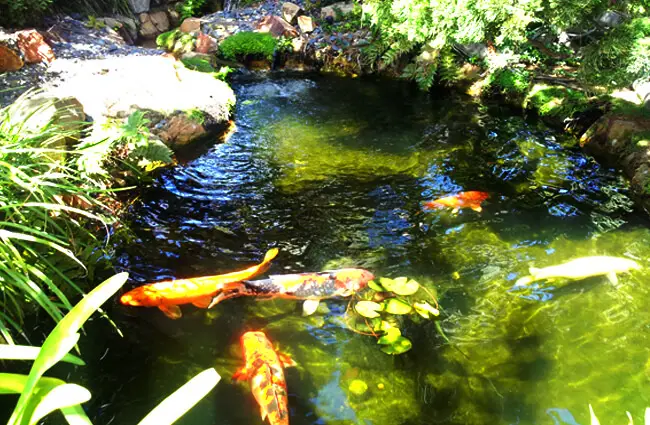

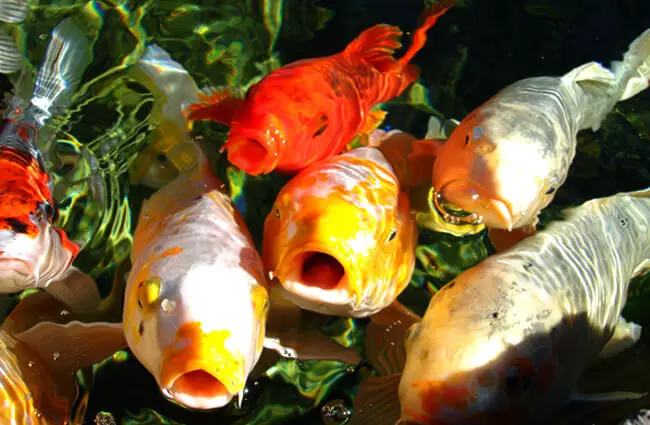


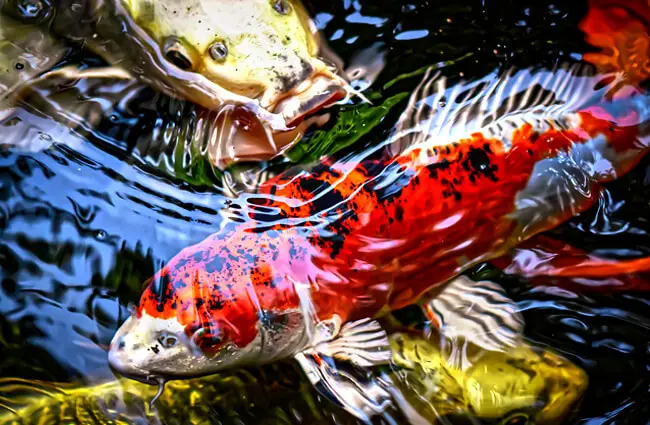
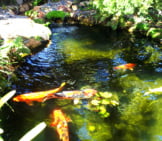

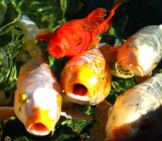

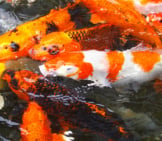
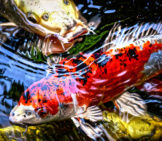
![Red Angus Closeup of a beautiful Red Angus cowPhoto by: U.S. Department of Agriculture [pubic domain]https://creativecommons.org/licenses/by/2.0/](https://animals.net/wp-content/uploads/2020/03/Red-Angus-4-238x178.jpg)












![Red Angus Closeup of a beautiful Red Angus cowPhoto by: U.S. Department of Agriculture [pubic domain]https://creativecommons.org/licenses/by/2.0/](https://animals.net/wp-content/uploads/2020/03/Red-Angus-4-100x75.jpg)

